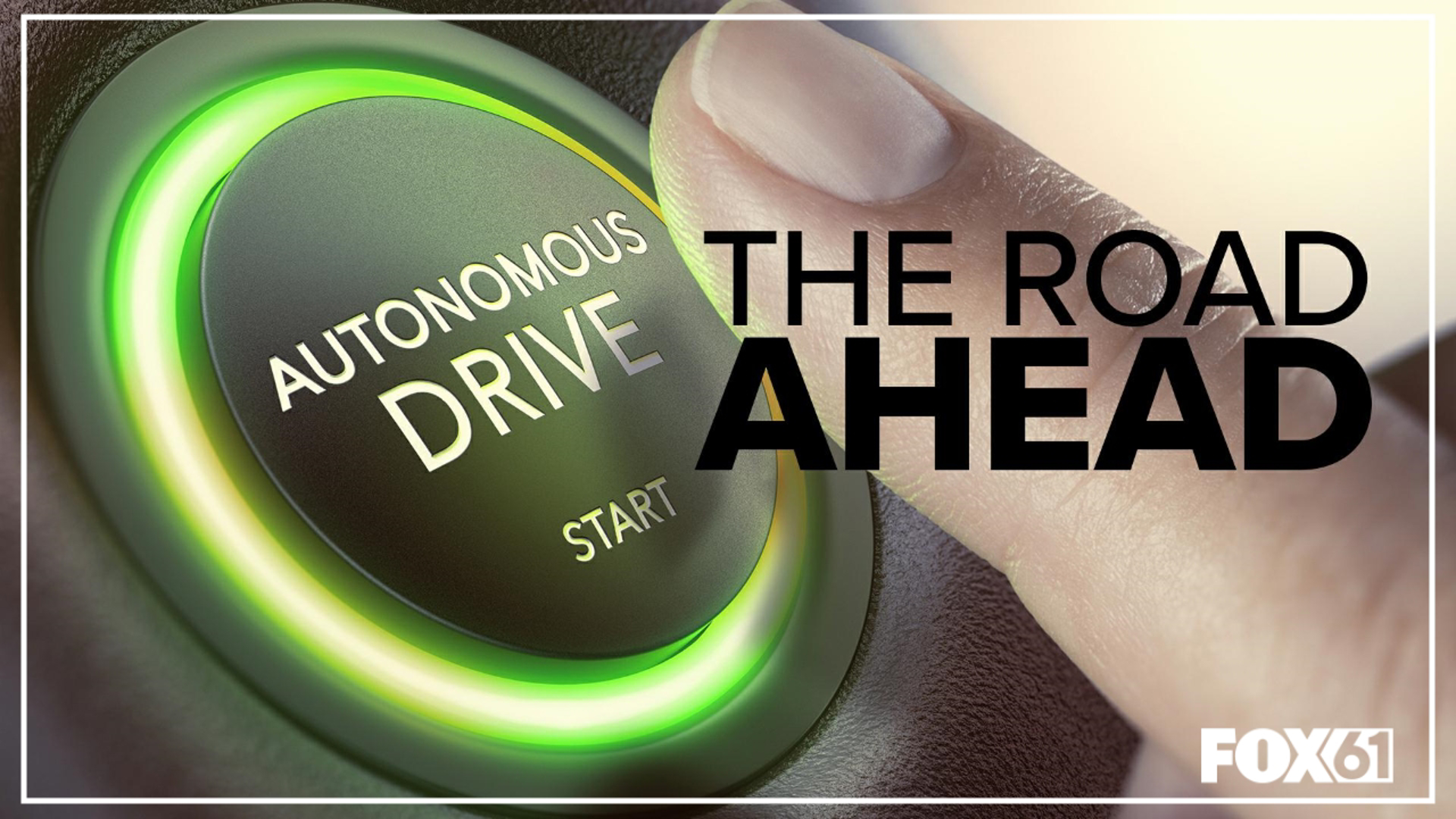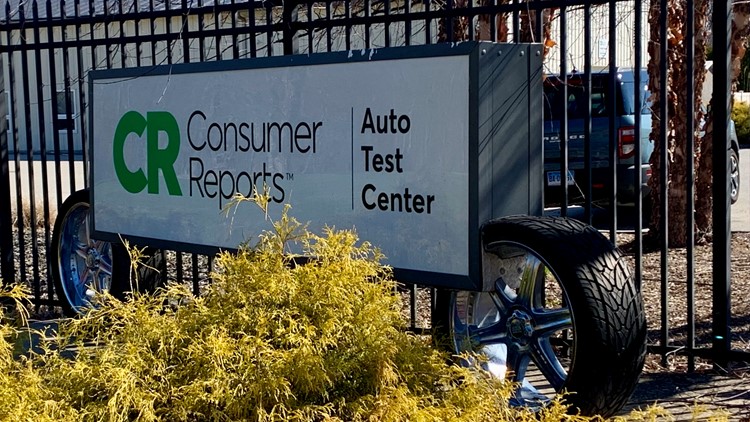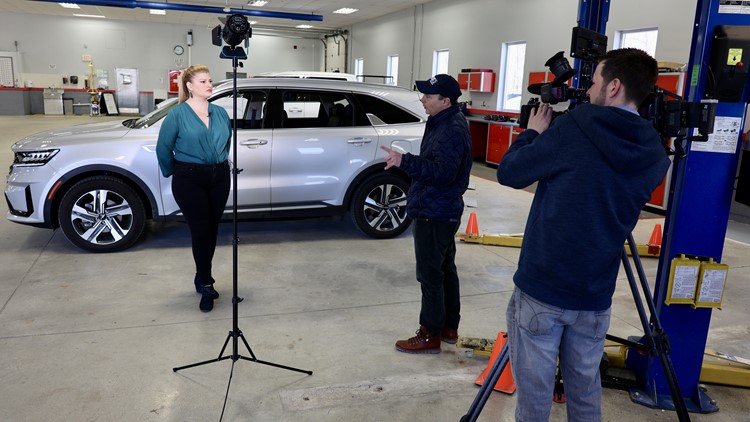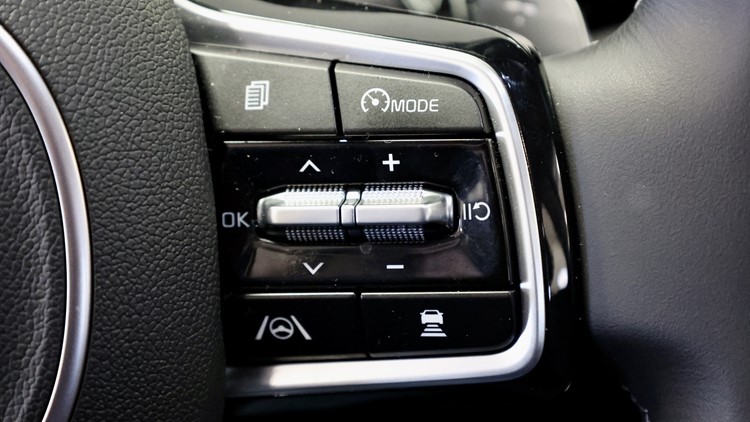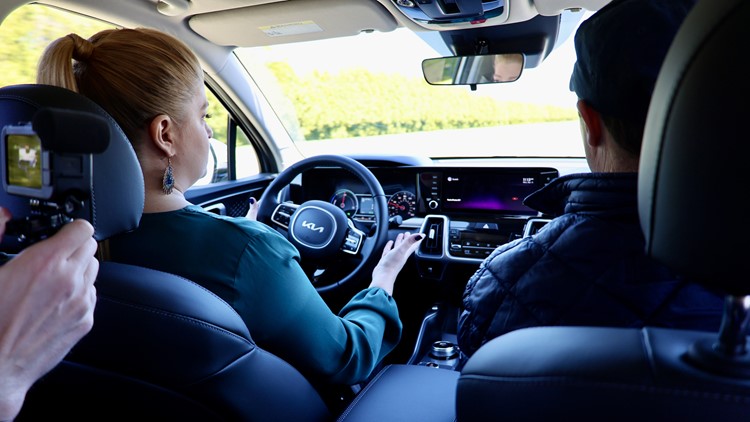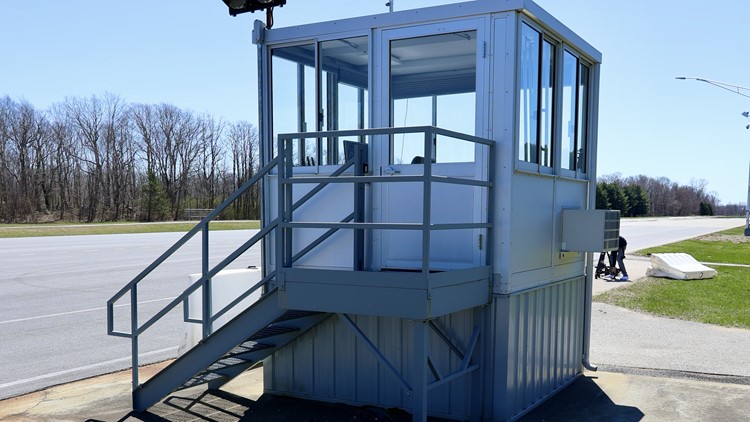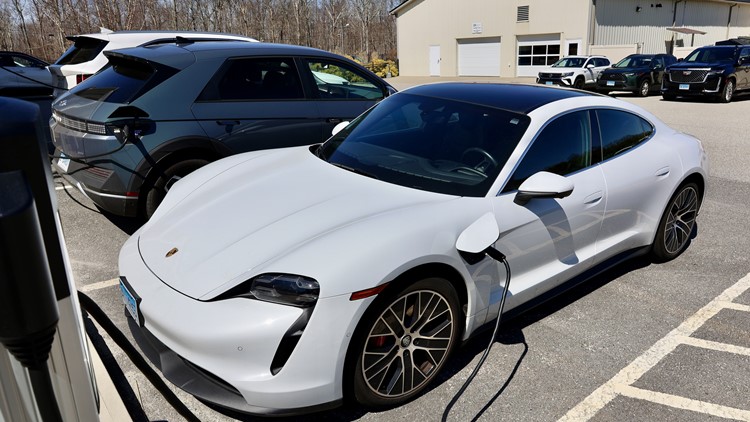EAST HADDAM, Conn. — The film is from 1956. Made for the GM Motorama, it shows a family of four starting their journey from Arizona to Chicago, but they are stuck in a traffic jam. This, of course, leads them to break out in song.
The patriarch sings: "'Till they bring the highways up to date... you can bet your high compression that we're going to be late."
The son, who looks like he could be cast in "The Micky Mouse Club", wonders what it would be like to suddenly be transported to the far-off future of "Nineteen hundred and seventy-six!"
Suddenly, the family jumps two decades ahead and is cruising along in the GM Firebird II, a turbine powered, four passenger, bubble topped car. They radio a uniformed man in a traffic control tower as they ask to merge on the High-Speed Safety lane, and the car now drives itself. The family sits back and enjoys the ride as the father lights up a cigar and the rest eat ice cream, dispensed from the dashboard.
The film's rosy view of the future of driving didn't come to pass. Neither in 1976 or the 40-plus years since.
What has happened since then has been a variety of different driver's aides that "automate" many aspects of the driving experience. Lane departure warning systems, adaptive cruise control, automatic braking, and limited forms of hands-free driving.
There's no uniformed man in a tower, acting as a highway driving concierge. Depending on the car-maker, computers and sensors work in tandem to apply the vehicle's brakes if an object like a car or pedestrian is in its path. The sensors can tell if it strays over the lines in the roadway. And in a limited way, the vehicle can map and drive its own route. Some, like the Tesla, will drive you through town. Others like the Cadillac Super Cruise, or Ford's Blue Cruise, will navigate highways only.
It’s confusing for consumers who’ve heard the phrase "self-driving cars," and wonder what that means for the daily driver.
According to the Society of Automotive Engineers (SAE), there are six levels of vehicle driving automation.
Level 0 – No automation on vehicle
Level 1 – Driver Assistance: When needed, the car controls the speed or steering but not at the same time. For example, adaptive cruise control brakes the car to maintain a set distance behind the car in front, or lane keeping assist where the car will steer back into the lane on the road if it drifts.
Level 2 – Partial automation: The systems on the car monitor the road and the distance, the location of other vehicles and take evasive maneuvers. The driver stops for stop signs or lights and scans for hazards.
Level 3 – Conditional automation: The car will manage the car’s speed, steering, and braking under usual conditions when turned on. The driver must take over in cases when the system can’t deal with the situation.
Level 4 – High Automation: The car can drive without human input, but only in designated areas.
Level 5 - Full Automation: The car is driverless on any road or under any conditions.
In vehicles currently on the market, there are a wide range of systems that cover Level 1 through Level 3. They go by various names from different car makers.
“What we see in the consumer available cars is not quite fully self driving. The technology isn't advanced enough to not pay attention to take a nap. I know that's the dream. But we're not there yet,” said Kelly Funkhouser, manager of vehicle technology at the Consumer Reports Auto Test Center East Haddam on the Colchester town line. “It's a little unnerving the first time you're behind the wheel, because it's surprising how advanced the technology really is right now. “
Funkhouser and her colleagues test the latest cars and trucks on the market on 327 acres. The former dragstrip houses garages, off road testing, skid pads and more.
Consumer Reports buys all its test vehicles from local dealers, getting the options on the cars that most buyers will order. They eschew loaner cars from manufacturers, or trips to pricey locations in order to not be influenced in their opinions. For some cars that are just coming to the market, the magazine will rent the vehicle from the manufacturer for a few days in order to publish some first observations but will save any testing and evaluations for after they purchase the vehicle. After the testing, the cars are sold.
One of the challenges for manufacturers and consumers alike is public perception, knowing what the car can and can’t do.
“A lot of people probably think that the Tesla is the most advanced vehicle on the road. But surprisingly, almost every vehicle that you can buy now offers that same technology on the car,” said Funkhouser. “This Kia behind me here that has the same type of technology to control the steering wheel, as well as, the speed so the braking and accelerator that the Tesla does and it can do pretty much the same thing, neck and neck when you're on the highway.”
A day at Consumer Reports Auto Test Center
Adding to the confusion is the marketing. Blue Cruise, Super Cruise, Auto Pilot all may mean close to the same thing but could have substantial differences.
“I lead the effort along with other organizations such as AAA National Safety Council, even SAE and others, where we are trying to standardize some of the terminology, referencing these features,” explains Funkhouser. “If they show up to a dealer and want something like automatic emergency braking. If they don't know the branded name, it may be difficult for them to ensure that they're getting it on their car. The last thing we want is someone who's looking for a safety feature to leave that dealer without the one thing they came for.”
The issue will impact buyers for years to come, as today’s new cars get traded in and move to the used car lot. Sorting out which feature does may be harder if the Cadillac with Super Cruise is being sold used by a Ford dealer.
“All of these features are being developed and put on cars very quickly. And the technology is also advancing just as rapidly," said Funkhouser. "In the past five or so even 10 years, a lot of this technology is being put onto cars, but there hasn't been a standard in terms of how they should perform or even tests that it needs to pass in order to be roadworthy.”
The technology has also driven up the price of collision repairs. With all the sensors in the bumpers and front end and windshield, a minor crash can result in a major bill. “If you have a cracked windshield, and you need to get that repaired, you need to actually get the sensors, the cameras whatever's going on behind that calibrated as well to make sure that those safety features are going to work when you need them,” said Funkhouser.
The bottom line is a consumer must stay informed.
Funkhouser’s closing advice? “Look, we've got a lot of technology, but you have to be smart about it," said Funkhouser. "You want to understand what that technology does in that specific car. Because there's a wide range of how they perform and how you're expecting them to perform across the market. So, get familiar with all of those features before you purchase a car.”
Doug Stewart is a digital content producer at FOX61 News. He can be reached at dstewart@fox61.com.
Have a story idea or something on your mind you want to share? We want to hear from you! Email us at newsteam@fox61.com
HERE ARE MORE WAYS TO GET FOX61 NEWS
Download the FOX61 News APP
iTunes: Click here to download
Google Play: Click here to download
Stream Live on ROKU: Add the channel from the ROKU store or by searching FOX61.
Steam Live on FIRE TV: Search ‘FOX61’ and click ‘Get’ to download.

